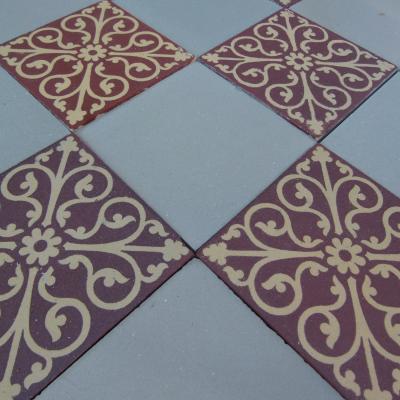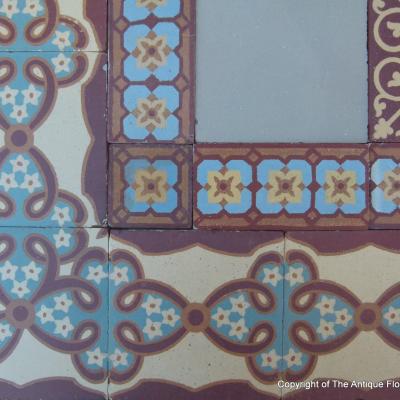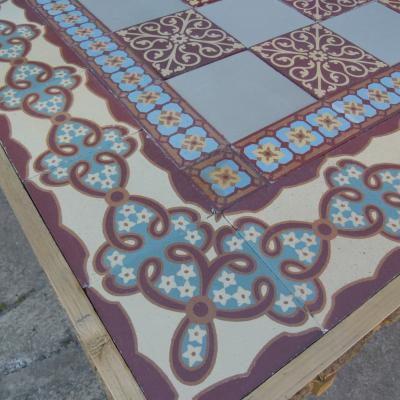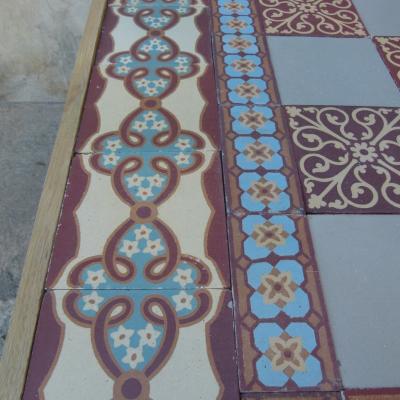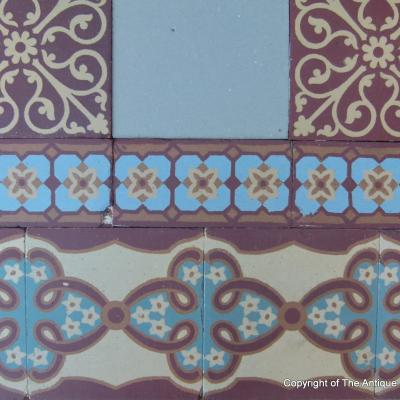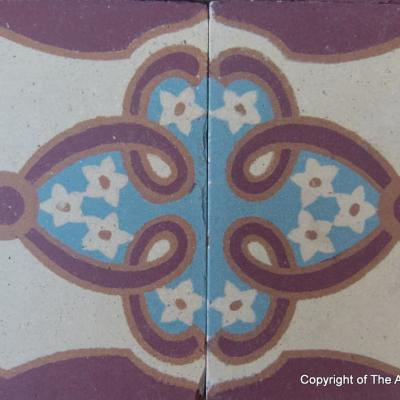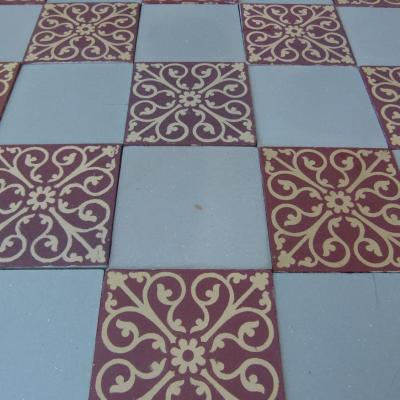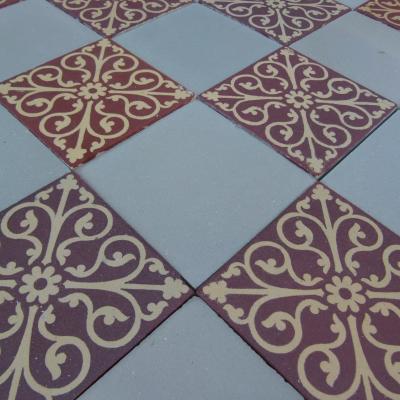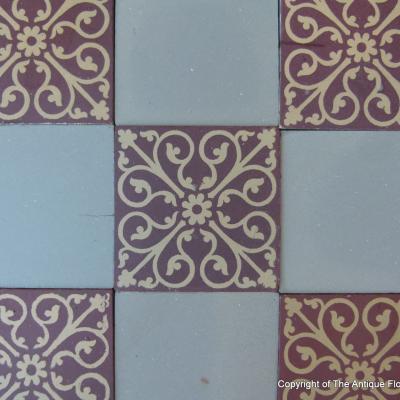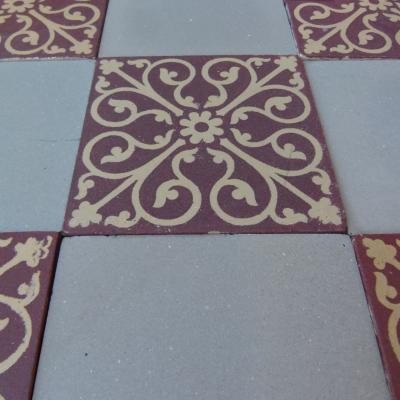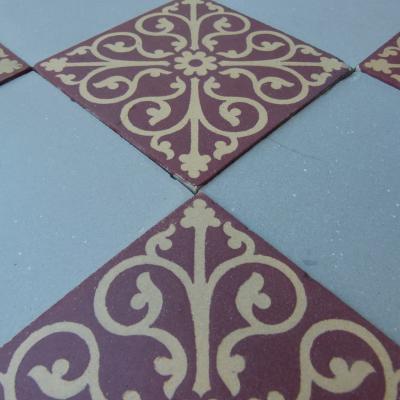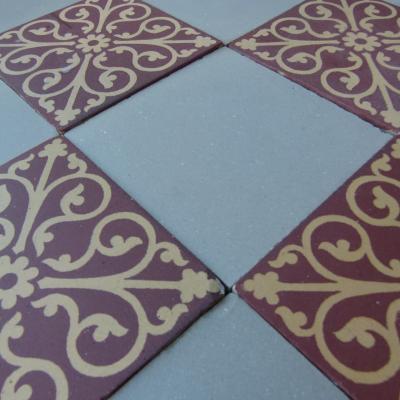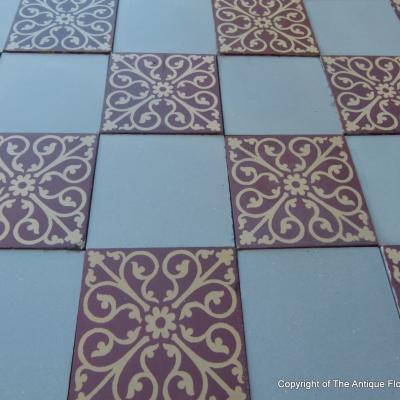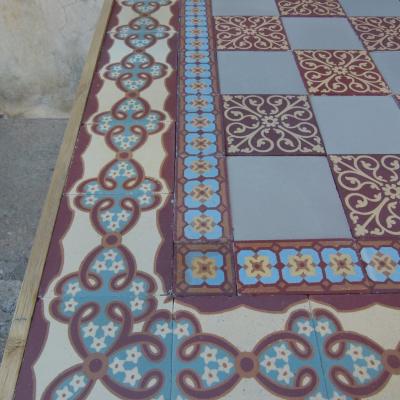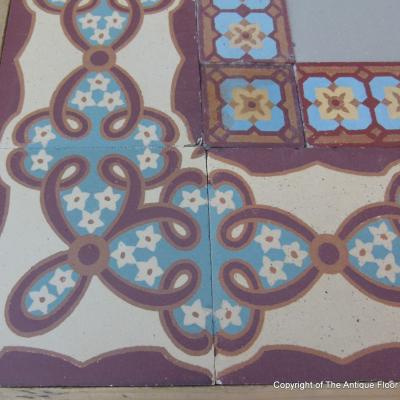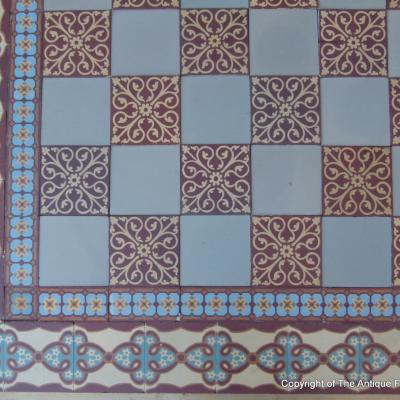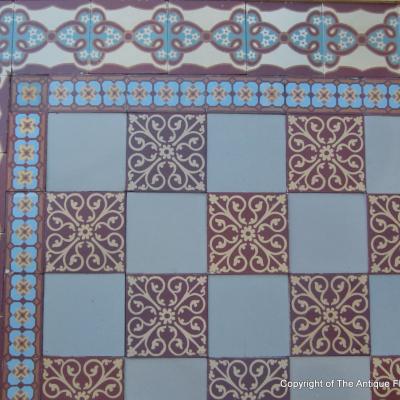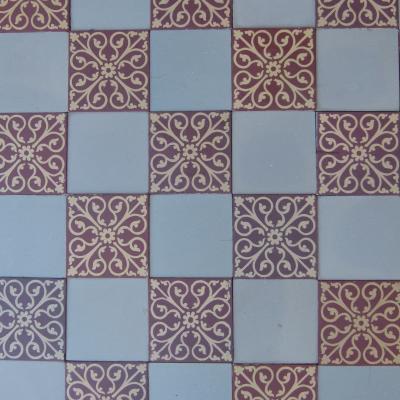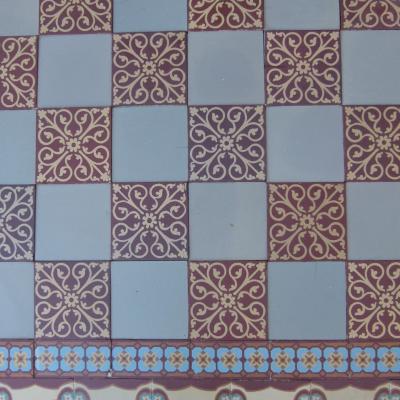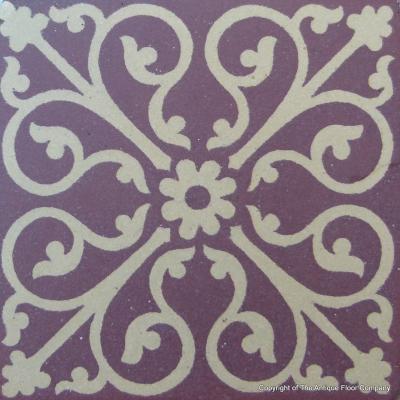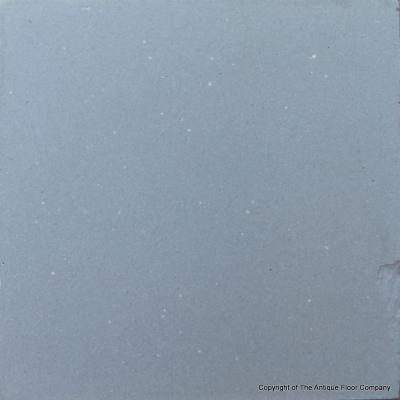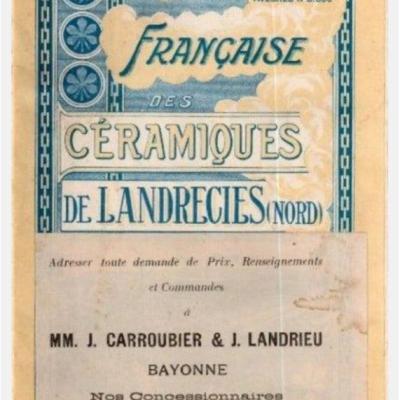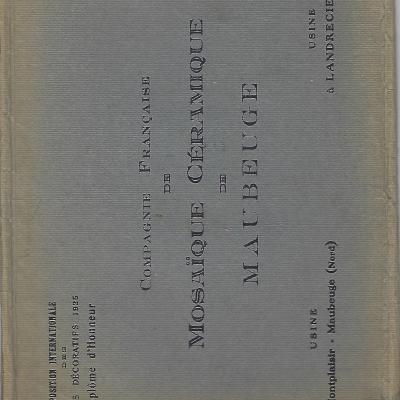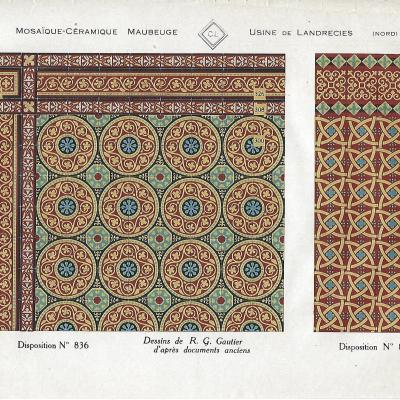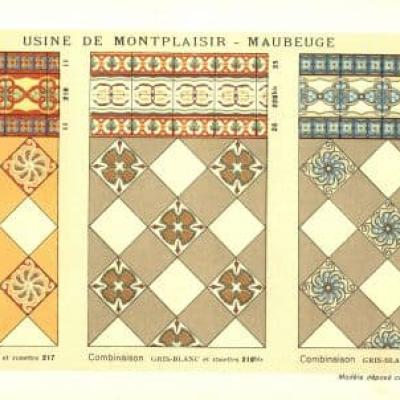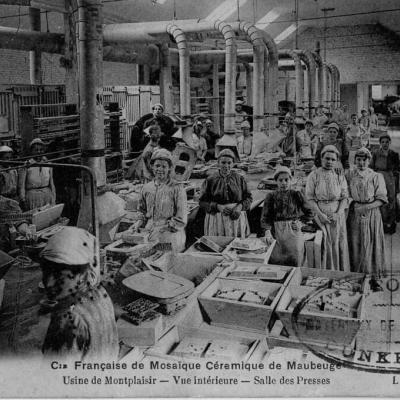A 15m2 / 160 sq ft. French Maubeuge damier ceramic c.1920-1925
A fully restored and ready-to-relay antique French ceramic produced by Manufacturer des Ceramiques Maubeuge, Landrecies et Montplaisir in the 1920’s. Included in the photo gallery are scans from their period catalogues, presenting the tiles, as well as a photograph of the workers in the Montplaisir factory in the early part of the twentieth century, a factory sadly long since closed.
A harmonious blend of colour and design, the principal area of the floor is of a chessboard pattern composed of two alternating tiles. One tile is a solid, muted blue-grey color, while the other is a rich terracotta-coloured tile adorned with a symmetrical floral and vine motif in yellow. These two tile types alternate in a classic chessboard layout, giving the floor a balanced and rhythmic appearance. The tile themes evoke a vintage, classical aesthetic, possibly influenced by Moorish or Mediterranean styles. The use of earthy reds and creams, paired with cooler tones of blue and grey, creates a rich but subtle palette that enhances the elegance of the design.
Surrounding the chessboard is a half-sized border; a light blue flower on a ginger background, forming a continuous line and adding a delicate, ornamental touch that complements the central design. Beyond this, a larger border adds further decorative complexity. This border features tiles with a repeating quatrefoil motif in light blue, accented with red, and set against a creamy-beige background. The design of these tiles forms interlocking clover-like shapes when viewed in sequence, enhancing the sense of intricacy and cohesion in the overall composition.
Totalling 15m2/160 sq ft, the principal tiles are 14.2cm / 5.6 inches sq. There are 230 of each of the principal tiles constituting the chessboard and 240 of the same-size border tiles, for which all the corner pieces are present. We have additionally reclaimed c.90 half-sized border tiles.
A highly fired tile they can be laid inside or outside the home.
NOTE Antique tiles were most commonly made in single or two tile moulds. Before current computer automation methods, their moulds were made by hand and the colour slips mixed by eye. Kiln temperatures could also be variable, as could the firing time. The result is that tiles often display subtle size and thickness variations and there can be tonal variations in colours, owing to the slip mixing and/or firing time. All of this makes these handmade tiles unique and adds to their charm. Some floors display their subtle variations in size and tones, some not, but when photographing we always take a random section of the floor so that it is representative of the whole. A tiler should always dry lay a section of the tiles to familiarise himself with them before starting to fix lay.
MAD87



